Every year about this time, fourth year medical students realize they will soon be submitting residency applications and (hopefully!) be invited to interview at residency programs around the country. One of the most common questions surrounding residency applications is how much one might expect to spend on application fees and travel costs to interviews. It is critical for medical students living on a tight budget to examine their finances and forecast approximate costs of residency interviews in order to save gradually or apply for additional loans to finance their application, interview, and travel costs. Unfortunately, few resources are provided to students regarding approximate travel costs, and for many, this information is provided when it is too late to apply for additional federal loans and many students must instead apply for expensive private or relocation loans to finance costs associated with residency applications and travel to interviews.
Published literature is fairly scarce regarding the costs associated with residency applications and travel to residency interviews. Many reasons for this paucity exist, most significant of which is the variability in numbers of programs to which applicants apply, relative geography of potential programs to home location, and most obviously, preferred travel accommodations among residency applicants. Ophthalmology residency applicants face yet another challenge during the fall-winter months known as “interview season,” in that applicants must secure a PGY-1 (post-graduate year 1) internship position in the NRMP match in addition to an ophthalmology residency match through the SF Match. A 2008 study examined 287 applicants to Urology residency during the 2006 application cycle, asking participants to respond to an 8-question online survey. Respondents were found to have attended a median of 12 residency interviews and spent a median of 20 days on the road. The median total cost of the interview process (excluding residency applications) was $4000 or $330 per interview.
Out of my own curiosity, and in an effort to provide future applicants with at least a detailed cost breakdown of my residency application, interview, and travel costs, I have analyzed my interview-season costs and present them to you here. Before we get to the numbers, here are a few assumptions and points to consider as you look at my costs.
- I attended 13 ophthalmology residency interviews, 8 transitional year internship interviews, and 3 preliminary medicine interviews. I applied all over the country for ophthalmology with no regional preference whatsoever (didn’t get much love from the West Coast, interestingly, despite being from the West). I did have a slight regional bias toward applying to transitional year internship programs in the Midwest which I felt were still very strong programs but in locations perhaps perceived by many to be less than tropical in order to maximize my chances of matching at a great program in a location with a lower cost of living than the East and West coasts.
- All 24 interviews were completed between October 29th and December 21st. In order to fit in so many interviews in such a short amount of time I was on the road/traveling for 38 out of 53 possible days.
- I am on the cheap-end of travel accommodation preferences, and tried to find the cheapest hotels, rental cars, etc. and grabbed food at the local grocery store or pocketed extra food from the continental breakfast to save a few bucks here and there. Surprisingly my food costs were quite low, largely because I stayed at hotels with breakfast and was often provided lunch and/or dinner by the program on interview day.
- I stayed with family/friends for six interviews and was able to avoid traveling to several internship interviews by completing the interview on the same trip as the residency interview.
- I interviewed in twenty cities and took nineteen one-way flights, a 10-day rental car road-trip, and one Amtrak train ride between interviews.
- I preferred rental cars to taxis both for cost savings and to be able explore the cities more easily before/after interviews.
- The cost of applications depends on the number of programs to which you apply. See the specific NRMP and SF Match sites describing their respective application fees. For those going into ophthalmology, see the related eyesteve article which shows the average number of programs to which applicants applied from 2004-2014.
Okay, now for the figures and data.
Below is a map of the cities to which I traveled for interviews. Keep in mind that Salt Lake City (in blue) was home base at that time, with very few interviews (2, both at my home program) within a day’s drive, requiring me to fly much more extensively than others in more travel and geography-friendly locations near multiple programs.
Below is a pie chart representing my total residency application and interview costs. I track my finances using mint.com, which is linked to all of my accounts, so this data should be a very good representation of my application and interview costs.
And here is a pie chart representing the breakdown of interview transportation costs, which represented just under 75% of my total application and interview costs.
A few key takeaways:
- Start making plans and saving for residency applications and interview to travel as early as possible. There is no excuse for not having sufficient funds to travel to sufficient interviews to match. Increase the amount of student loan aid you receive in years 1, 2, and 3 to have enough cash on hand at the beginning of year 4 when applications and interviews begin. Are you already taking out maximum student loans? Apply for residency/relocation loans, ask your rich uncle, borrow from your parents, or find some other means (legally!) to fund your travel.
- Previously published literature in the journal Ophthalmology indicates applicants in the 2011 match cycle who interviewed at 11 programs or more had a >90% chance of matching. Apply to enough programs to interview at approximately 11, but avoid interviewing at many more than 11 as your chances of matching do not increase and additional interviews will just leave you with unnecessary debt and burnt out for the interviews at your preferred programs.
- The Urology article cited above from 2006 data suggested that applicants spent a median of $330 per interview. If you look at my total costs ($8,067 excluding applications) and consider I attended 22 interviews, my per-interview travel cost was $367, very similar to the median cost per interview in the study. I recommend using $350 per interview in your financial forecast and simply multiply by the number of total interviews you plan to attend to arrive at your total estimated cost for traveling to and from residency interviews (though remember to include on top of this the cost of applications, which can vary depending on how many programs to which you need to apply in order to be invited to sufficient interviews to match).
Please let me know if you found this financial breakdown useful and best of luck in the match!

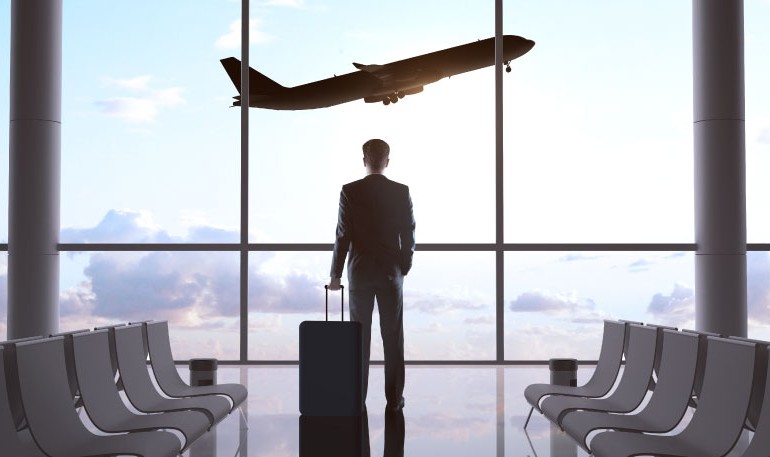
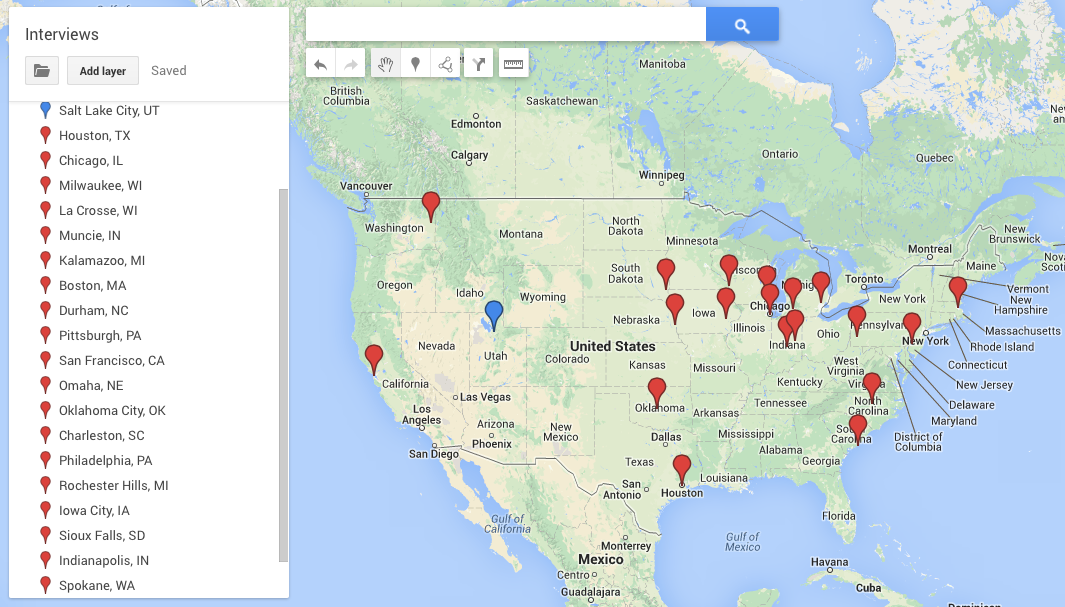
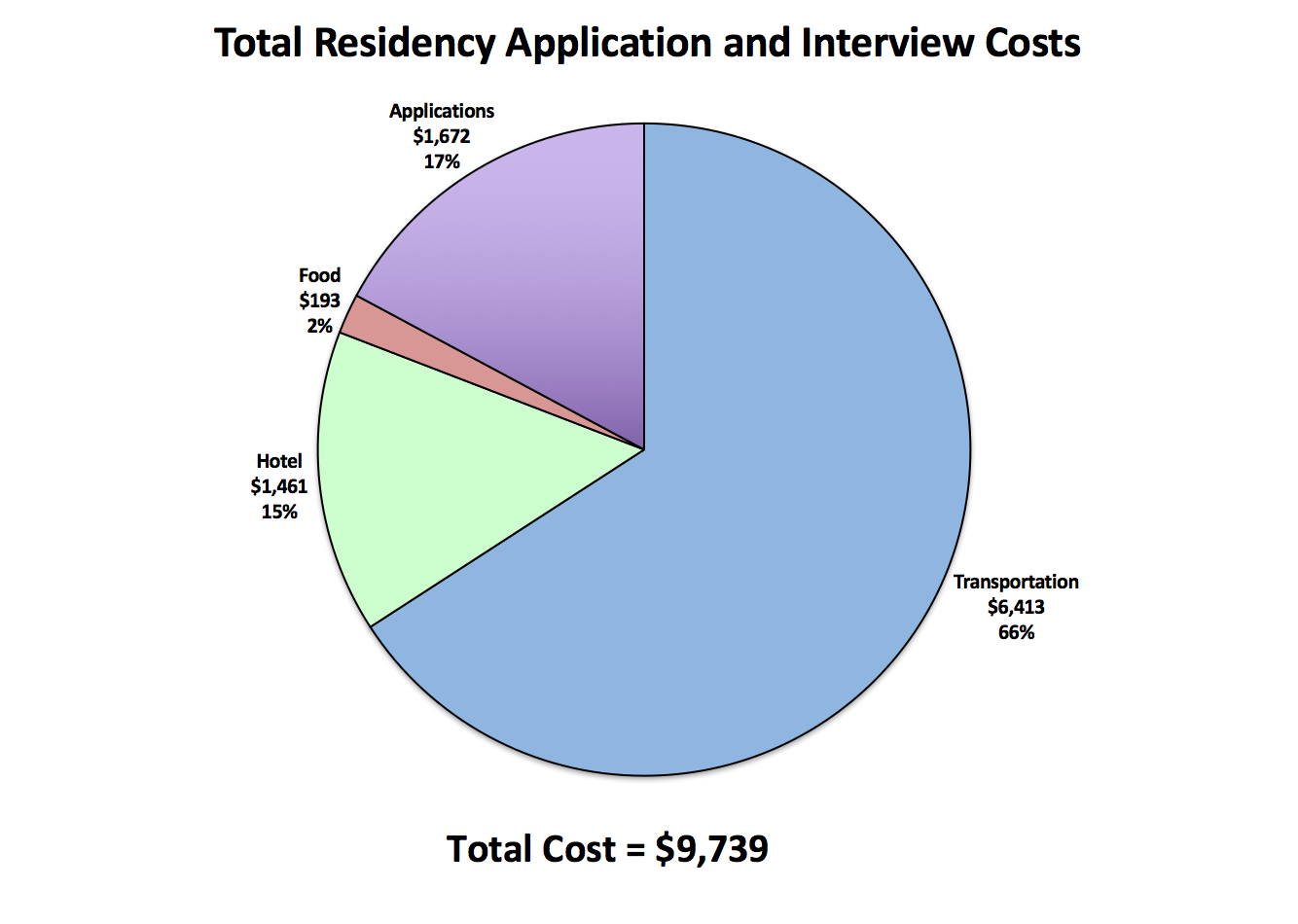
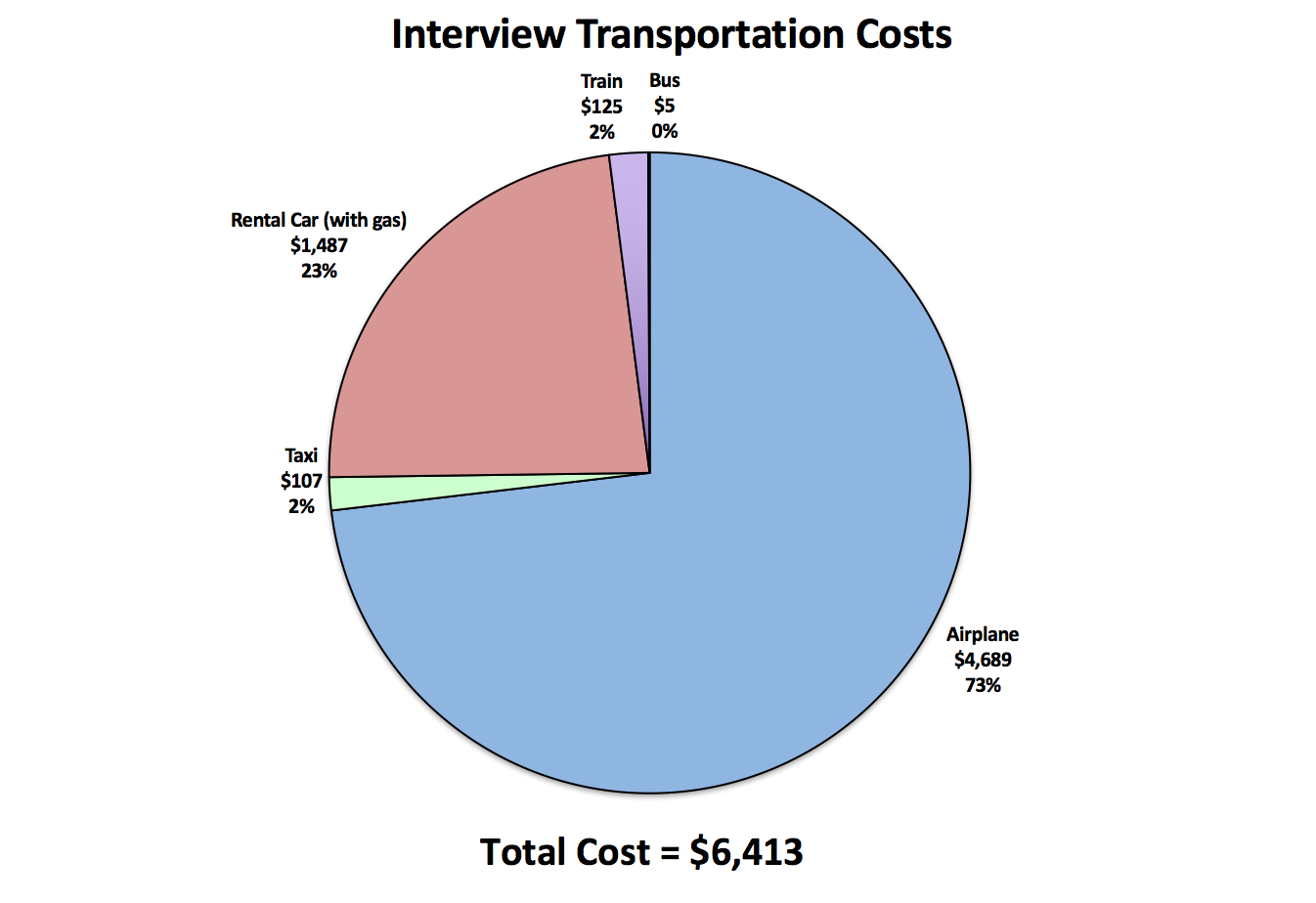










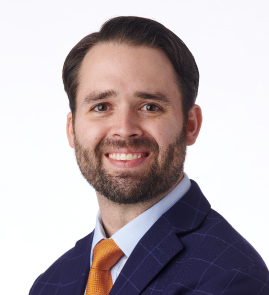
[…] writes on his blog that his total expenses for 24 residency applications totaled over $9,600. 80 percent of that included expenses for traveling cross-country for […]
This is incredible! Thanks so much for this, very useful.